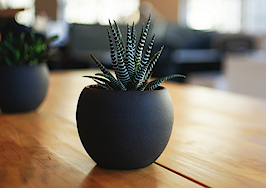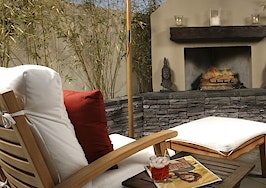All real estate agents have had a “perfect” house on their showing list that buyers took one look at and refused to step foot into. Sometimes the location is not what they hoped for, but usually in those cases, they just don’t like the looks of the whole place.
They might not even be able to put their finger on why, but something about it turns them off before you even shut off your car engine.
A buyer’s first response to a prospective new home is based solely on its curb appeal, and that’s a topic that deserves a lot more attention than it usually gets.
Here are the top curb appeal issues that listing agents should take care of before buyers even have a chance to reject the home.
1. Numbers
How easy is it to find, and do you feel safe getting there?

AlexLinck / Shutterstock.com
You’re going to have to put directions in the listing, so make sure the trip to the house doesn’t involve touring your town’s least attractive areas. And make sure agents and potential buyers know when they’ve arrived.
Are the house numbers plainly visible? Are they attractive? Do they reflect the style of the home and the neighborhood? Are they sleek and clean or dingy and old-fashioned? Are the house numbers also painted on the curb?
Are the numbers on the mailbox, and is the mailbox in good shape or a wreck? Finding the house is such a rudimentary step, we often forget how crucial the process of getting to it is in shaping the buyers’ first impression.
2. Roof
Don’t just look out, look up. What condition is the roof in?

paul90g/Shutterstock
It’s common for listing agents to run a critical eye over the front entry, the hardscape and the landscaping features. Buyers, however, look up first to check out the roof.
If the roofline is unattractive, or worse, if the roof itself is shot — you have a major problem.
Nobody likes to spend their fix-up funds on roofs. Conversely, if the roof is good and looks like it will endure for a couple decades, you have an asset to draw attention to that will reinforce a good first impression.
3. Walkways
Where will agents park? And what will their clients step out onto?

Elena Elisseeva / Shutterstock.com
Crumbling curbs, broken concrete walks and driveways, barren strips of dried weeds and bare ground between the curb and side all need to be addressed before the house goes on the market. You don’t want visitors to find the walk to the entry a obstacle course of raised concrete, rough bushes and weeds.
Don’t forget how much visual space garage doors can occupy. If they’re peeling and dispirited looking, the appearance of the whole house suffers, so make sure they’re painted the same color (or a darker shade) as the house and that any visible hardware looks and works well.
4. Access
How can you make access easy for your fellow agents?

Iriana Shiyan / Shutterstock.com
Don’t assume every buyer’s agent will be dressed, shod or physically able to squat to work the lockbox comfortably. Hang it high enough for agents to remain erect while their clients watch them access the house keys.
It goes without saying that hanging a lockbox behind rose bushes or other prickly, sweater-pulling plants is just plain thoughtless. It may not leave a bad impression on buyers, but agents won’t be eager to show the property if they have to fight the shrubbery to gain access to the lockbox.
5. Handrails
Are steps and handrails sturdy and good-looking?

Iriana Shiyan / Shutterstock.com
Steps should, first and foremost, feel solid and be strong and safe enough for your most fragile and your heaviest clients. Even a single step profits from a handhold of some sort to help clients maintain balance.
Handsome railings frame longer flights of stairs attractively, adding to their curb appeal and their safety. Foundation plantings will, hopefully, already be in place to accent the front steps.
Decide how to supplement permanent plantings with attractive pots of seasonal plants set beside or on wide steps as they ascend to draw the eye up toward the entry.
Consider that facing unattractive steps with stone, staining concrete steps or painting wooden ones are among the quickest stairway facelifts.
6. Welcome mat
Does the entry convey a sense of welcome?

Iriana Shiyan / Shutterstock.com
A generous front porch should be emphasized for its outdoor living possibilities but not over-furnished. A small seating area, a porch swing or even a chaise or chair with a side table adequately suggest outdoor living possibilities.
If there is no actual porch, you can create a more impactful focal point by placing tall topiaries on either side of the front stoop.
The entry door itself is the single piece of architecture that affords the most (or least) welcome. It should be in impeccable condition and reflect the architecture of the home and/or overall style of the landscape.
If the front door lacks personality, create it with a deep paint or stain color and handsome hardware. Black doors — both matte and shiny — and red doors in a variety of shades are often good choices for both formal and modern homes. But bungalows and cottages lend themselves to more informal color schemes, wood tones as well as pure white, cobalt blue or yellow in solids, blocks or as accents.
7. Windows
The windows are the eyes to the soul of the house. What do they say?
135pixels / Shutterstock.com
Consequently, the trim of windows and doors should be freshly painted or stained (or, at least, touched up and cleaned vigorously); windows should be made spotless inside and out; and curtains and blinds should appear uniform and refined from the street.
In general, having white or off-white backing and shades or blinds lowered to precise levels on each floor will give a polished, yet effortless, appearance.
8. Landscaping
Does the landscaping create an appropriate frame for the house?

Iriana-Shiyan / Shutterstock.com
Every home has a distinct style. Some — like half-timbered Tudors and Victorians of all types — are more formal and lend themselves to neatly-trimmed lawns and clipped hedges.
Others, more cottage-like, call out for less formality — colorful flowers in wild array, low fences of wood or metal, flower boxes and garden benches. Harmony occurs when the landscaping suits the architecture and style of the home.
With drought at the forefront of many Western homeowners’ minds, grass is increasingly giving way to sparser landscapes with more bark, gravel and even large stones used as sculptural elements. Such landscaping looks great with less formal, more modern architecture.
One caveat: take care that your new drought-tolerant landscape doesn’t include high oil plants or grasses that catch fire quickly.
9. Lighting
What does the property look like at night?

Breadmaker / Shutterstock.com
From the route to the landscape and porch lights, you need to look at everything once more at dusk. Daylight savings time will end soon, and more showings will take place after work when there will be less light.
Are those house numbers well-lit at night? Do you have interior lights on a timer, or are the owners prepared to turn on all lights before leaving for evening showings?
Is there adequate lighting? Can everyone see the sidewalk and driveway clearly and walk to the door safely? Steps, particularly, require good night lighting. So go back over the first eight points at night and make any changes needed before the property goes on the market.
Most of these improvements involve more attention to detail and elbow grease than time or money, but they pay off in a big way in less time on the market and more money in the final offer. Your sellers will love them, and your fellow agents will be eager to show all your listings if they know they’ll always be able to get to your lockboxes without crawling through the rose bushes in the dark.
Nicole Solari is owner and managing broker of The Solari Group in Solano and Napa Counties in Northern California. Nicole runs one of the highest producing brokerages in all of Northern California.













